Cause
There are 3 cases of white spot disease on shrimp with very similar external signs, which can be caused by viruses or bacteria or by the environment. For viruses, the disease is caused by white spot syndrome virus (WSSV). Bacterial White Spot Syndrome (BWSS). White spot disease due to the environment is caused by when the hardness (Ca2+ and Mg2+) of the water is high, the shrimp will absorb too much Ca2+ and Mg2+ to appear on the shells of white spots.
Diagnosis
The first thing to do when detecting white spotted shrimp is to quickly determine the cause for timely processing. The WSSV PCR test gives quick and accurate results, which should be performed as soon as the shrimp show signs of white spots. If the PCR result is positive for WSSV, harvest immediately, on the contrary, it can be further cultivated and processed depending on the case.
– For white spotted shrimp caused by viruses: Diseased shrimp with many white spots with a size of 0.5 – 2.0 mm appear inside the shell, especially the thoracic head shell, 5th and 6th abdominal vertebra and then spread the whole body. Sick shrimp perform poorly, eat a lot suddenly, then quit eating, swimming in the water or drifting to the pond. Sometimes shrimps show additional signs of red stem. When white spots appear after 3-10 days, shrimp die mostly in ponds (100%). PCR test positive for WSSV.
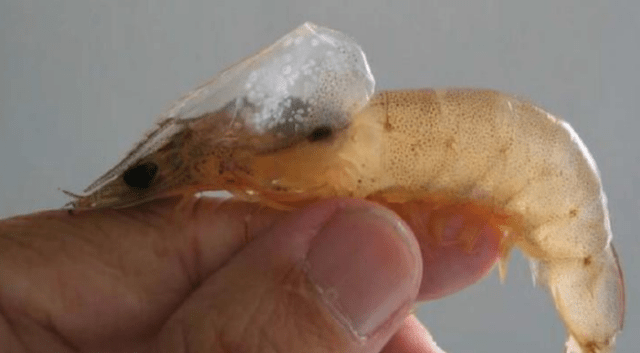
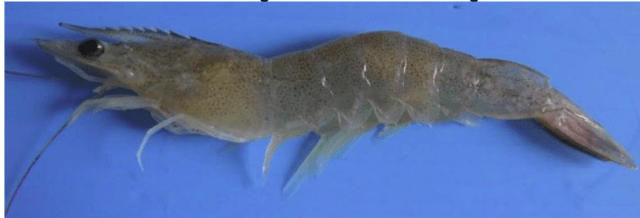
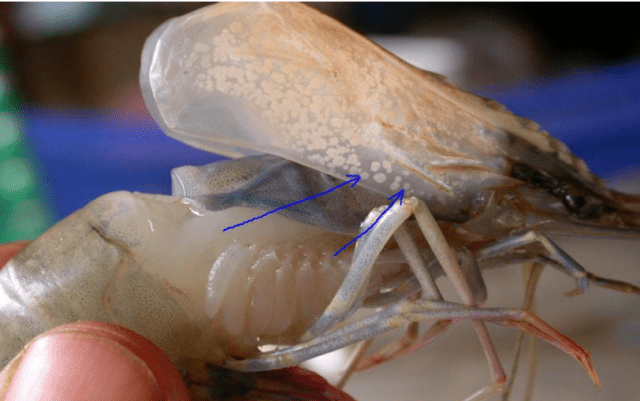
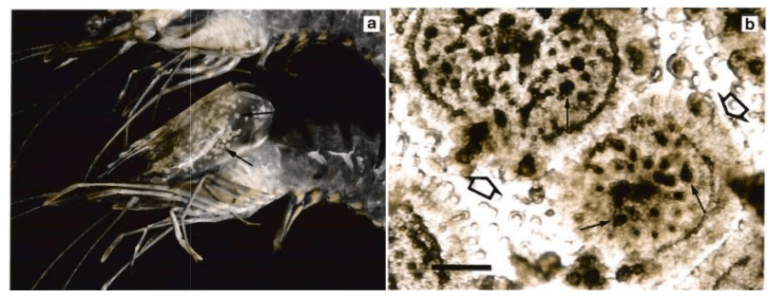
– For white spotted shrimp due to bacteria: The newly infected shrimp are still eating the bait and molting, sometimes the white spots disappear after the shrimp is peeled. When the infection is more severe, the molted shrimp is slowed down, slowed down and scattered, but there is no mass dead shrimp phenomenon, most of the shrimp are packed with seaweed and black gills. Sick shrimp have white spots that are opaque all over the body. Round white spots, smaller and less white spots due to the virus (WSSV). The fresh sample under the white spot microscope has a diffuse topography with a rounded ridge-like border in the middle hollow, while the white spot due to the virus has many black spots (melanin) in the middle. White spots are usually just outside the epidermis and organize the connective tissue. In general, shrimp eat slower but do not cause significant damage. PCR test was negative for WSSV.
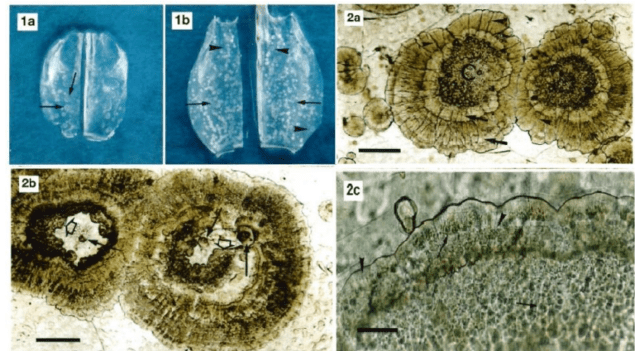
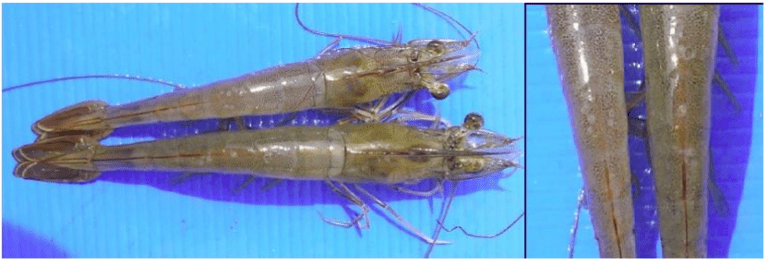
– For white spotted shrimp due to the environment: Shrimp with white spots in the breast head shell or the shell in the back but still healthy, no shrimps on the shore, the shrimp flock is still active and eat at normal level, the stripping cycle is longer than normal and the shrimp grow slightly slowly, the cause of white spots is due to the environment but not the virus or bacteria. PCR test was negative for WSSV.
Preventing and treating diseases
To prevent diseases well, it is necessary to implement the following principles: (i) Testing and selecting shrimp of parents and shrimp breeds that are not infected with WSSV, with good quality; (ii) Selecting appropriate breeding seasons, avoiding rearing in the cold season; (iii) Water sources for ponds are not taken directly from nature, must be filtered; (iv) Preventing the entry of pathogens such as wild crustaceans such as cuffed crabs and birds by making fences around ponds and spreading nets to prevent birds; (vi) Managing and closely monitoring pond water environment.

 Tiếng Việt
Tiếng Việt Indonesia
Indonesia